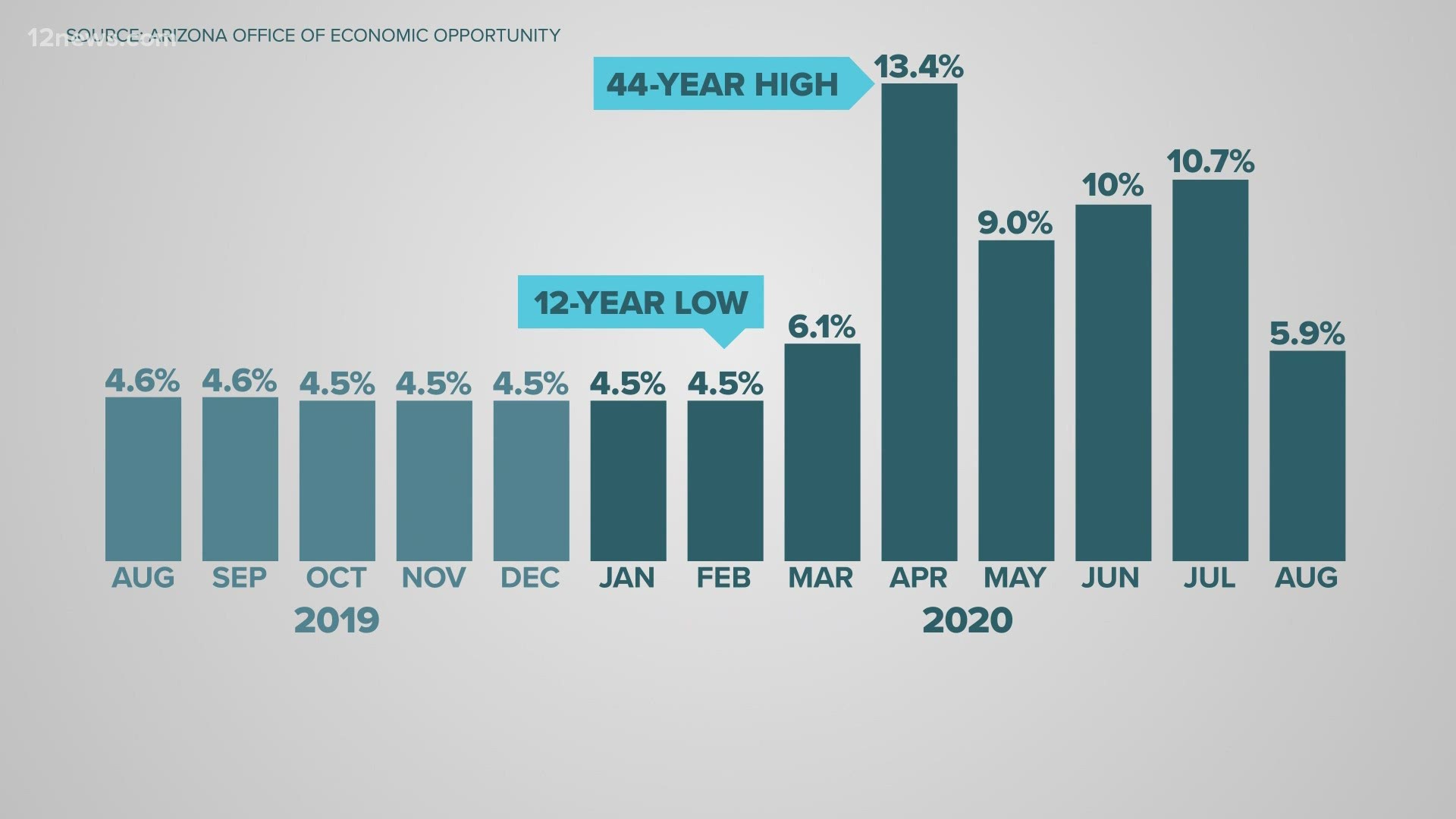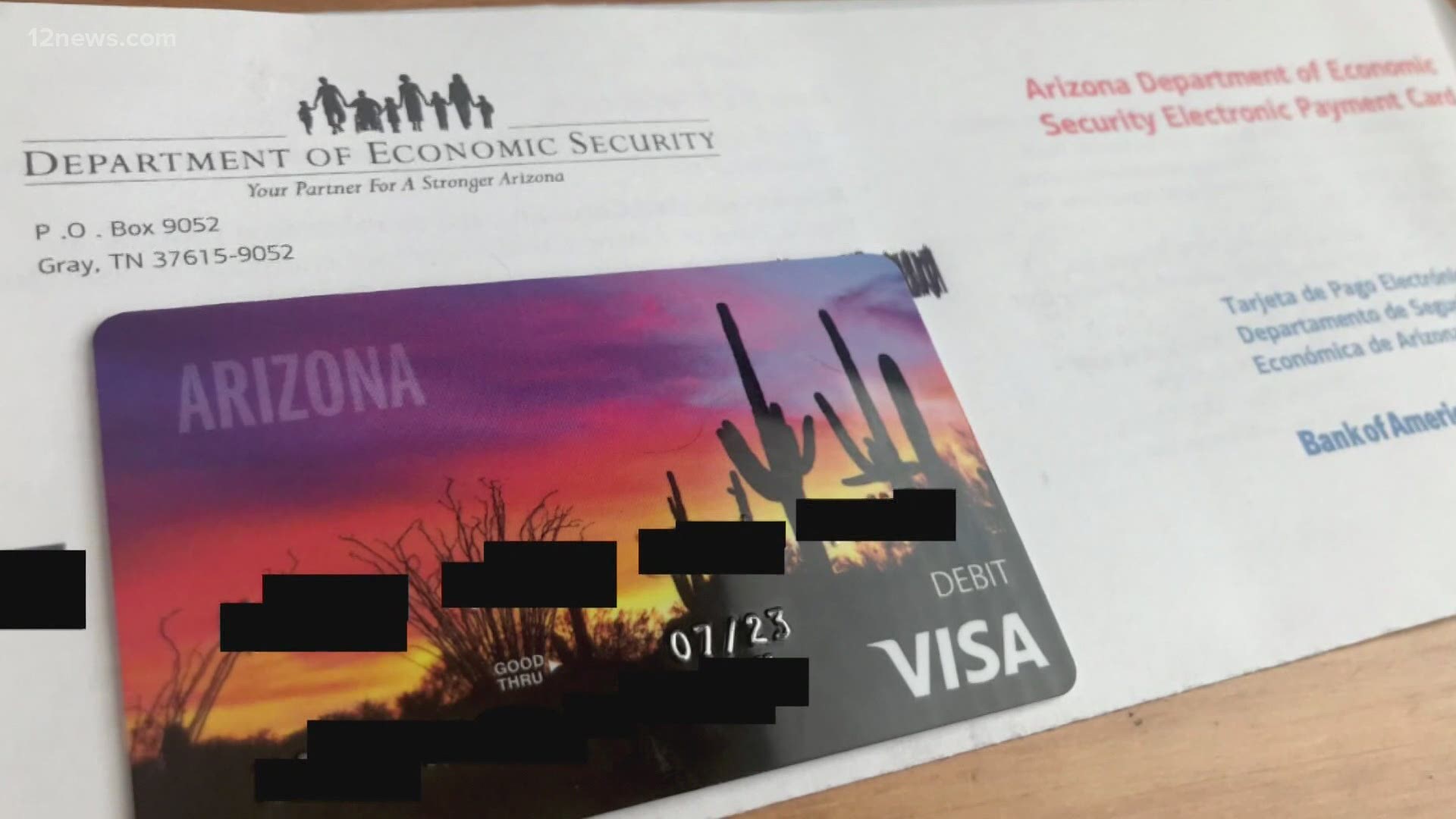ARIZONA, USA — Arizona’s jobless rate plunged last month, from 10.7% in July to 5.9%.
Gov. Doug Ducey declared the news “terrific.”
“The largest drop in unemployment in modern history,” he said at a news conference.
But the story wasn’t the appearance of new jobs - it was the disappearance of job hunters.
Record numbers of Arizonans bailed out of the workforce last month, said Doug Walls, the state labor market information director.
According to the Arizona Office of Economic Opportunity, 32,000 people were added to the job rolls last month. But the number who left the workforce - and no longer count as unemployed - was 145,000, almost five times larger than the jobs gain.
Arizona now has the lowest rate of people in the workforce in 44 years, at 58.5%.
“That’s a really huge number of people just to disappear like that in one month,” said Dave Wells, research director at the Grand Canyon Institute. “That’s not what’s happening across the country.”
The shrinking workforce was the key reason the state jobless rate dropped almost five points.
If the labor force number had remained unchanged from the month before, the state’s jobless rate would have come in at about 10%.
At a news conference Thursday, Ducey rejected the Office of Economic Opportunity's math that produced the August jobless rate.
“That’s not accurate… that’s not how the numbers work,” he said in response to a reporter's question. “The rate went down because employment increased in the state of Arizona.”
The state's job market has suffered from whiplash during the pandemic.
In February, Arizona’s jobs machine was running hot, knocking down the jobless rate to a 12-year low of 4.5%.
Just two months later, the jobless rate soared to a sickening 44-year high of 13.4%, as business and school shutdowns took hold.
Now it’s settled back to August’s more normal 5.9%.
Arizona schools’ reopening last month was responsible for most of the job gains, Walls said. Several private-sector industries also showed gains.
“We saw above-average gains. Those were really positive signs,” Walls said.
But the reasons for the big hit to the labor force remain a mystery.
“We’re not able to dive into the latest numbers to identify why they left,” Walls said.
Here’s one theory: Parents and caregivers had to leave the workforce in August to attend to children learning online at home.
“That would be one of my first guesstimates about what’s potentially going on here,” Wells said.
School openings in the rest of the country in September, and the resulting impact on the labor market, might support those suspicions, Wells said.
People who’ve left the workforce are still eligible for unemployment benefits.
Arizona’s weekly payment of $240 is second-lowest in the nation.
Ducey has rejected calls to boost the benefit on his own.
“It’s working to get cash into jobless people’s pockets,” Wells said. “It’s just not working to get enough cash into jobless people’s pockets.”


